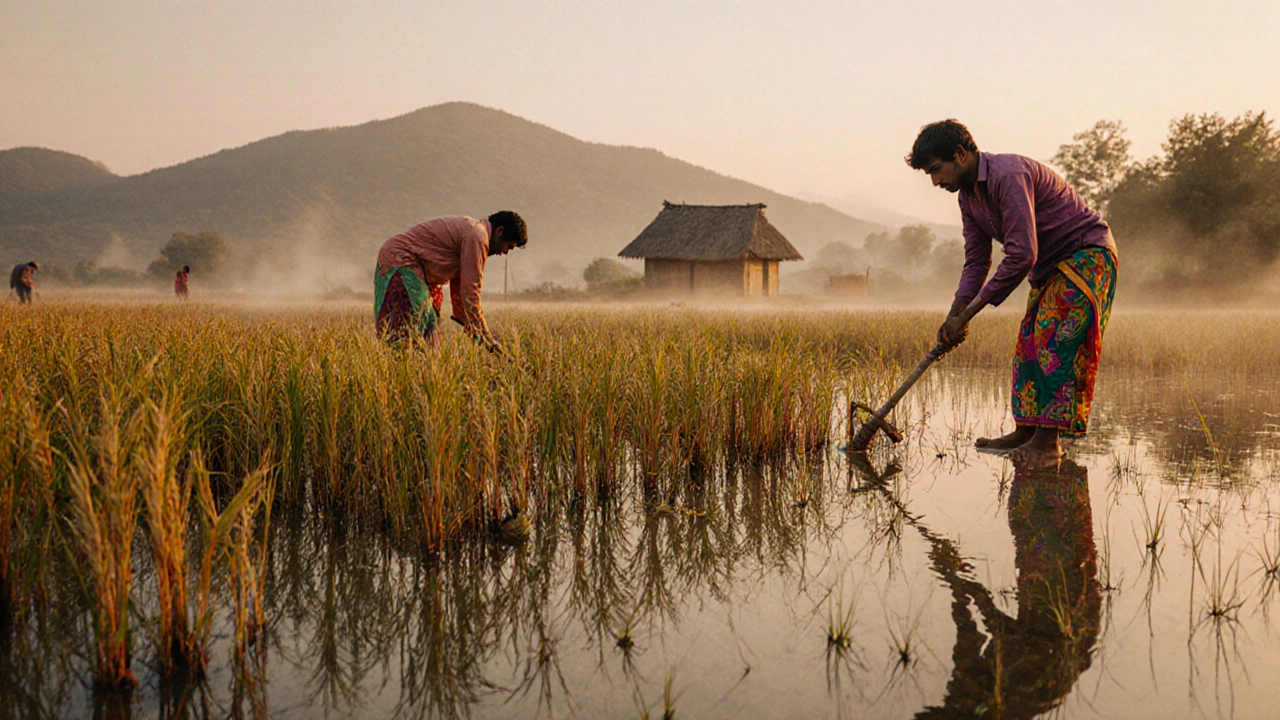Rice doesn't come back every year-it's an annual crop that must be replanted each season. Learn why rice can't regrow, how farmers manage yearly planting, and what perennial rice research means for the future.
Rice Replanting: When and How to Fix Poor Rice Stands in Indian Farms
When you’ve sown rice but see patchy, weak, or missing seedlings, rice replanting, the practice of replacing failed rice seedlings in established paddy fields. Also known as rice transplanting correction, it’s not a last resort—it’s a smart move that keeps yields on track in India’s monsoon-dependent farms. Many farmers assume once the field is flooded, it’s too late to fix gaps. But that’s not true. Rice replanting works best within 10 to 15 days after initial transplanting, when the soil is still soft and the surviving plants haven’t crowded out the empty spots.
rice seedling survival, how well young rice plants establish roots after being moved from nursery to field is the real issue behind the need for replanting. Poor survival often comes from shallow planting, damaged roots during transplanting, or uneven water levels. In India, where smallholders manage less than 2 acres on average, every missing plant means lost income. Replanting isn’t just about filling holes—it’s about protecting your investment. You don’t need fancy tools. A simple hand transplanting method using healthy seedlings from your own nursery or a neighbor’s patch works just fine. Keep the replanted seedlings at the same depth as the originals, and water gently right after to reduce shock.
rice farming India, the dominant agricultural practice across states like Punjab, West Bengal, and Andhra Pradesh, where rice is the staple crop relies on timing more than anything. Replanting too late means the crop won’t catch up to the main stand, and grain yield drops. Do it too early, and you risk disturbing healthy plants. The sweet spot? When the first batch of seedlings is about 6 to 8 inches tall and has developed 3 to 4 leaves. That’s when you can spot which spots failed—maybe because of pests, uneven soil, or poor seedling quality. Replanting in those spots can boost your harvest by 10 to 15%, sometimes even more.
You’ll find real examples in the posts below: how farmers in Odisha saved their crop after a sudden rain washed out seedlings, how compost-rich nursery beds give stronger roots for replanting, and why some use a mix of local varieties to improve resilience. These aren’t theory-heavy guides. They’re practical, field-tested fixes from farmers who’ve been there. Whether you’re managing a small plot or a medium-sized farm, rice replanting is a skill worth learning. It’s not about perfection—it’s about making the most of what you’ve got.
